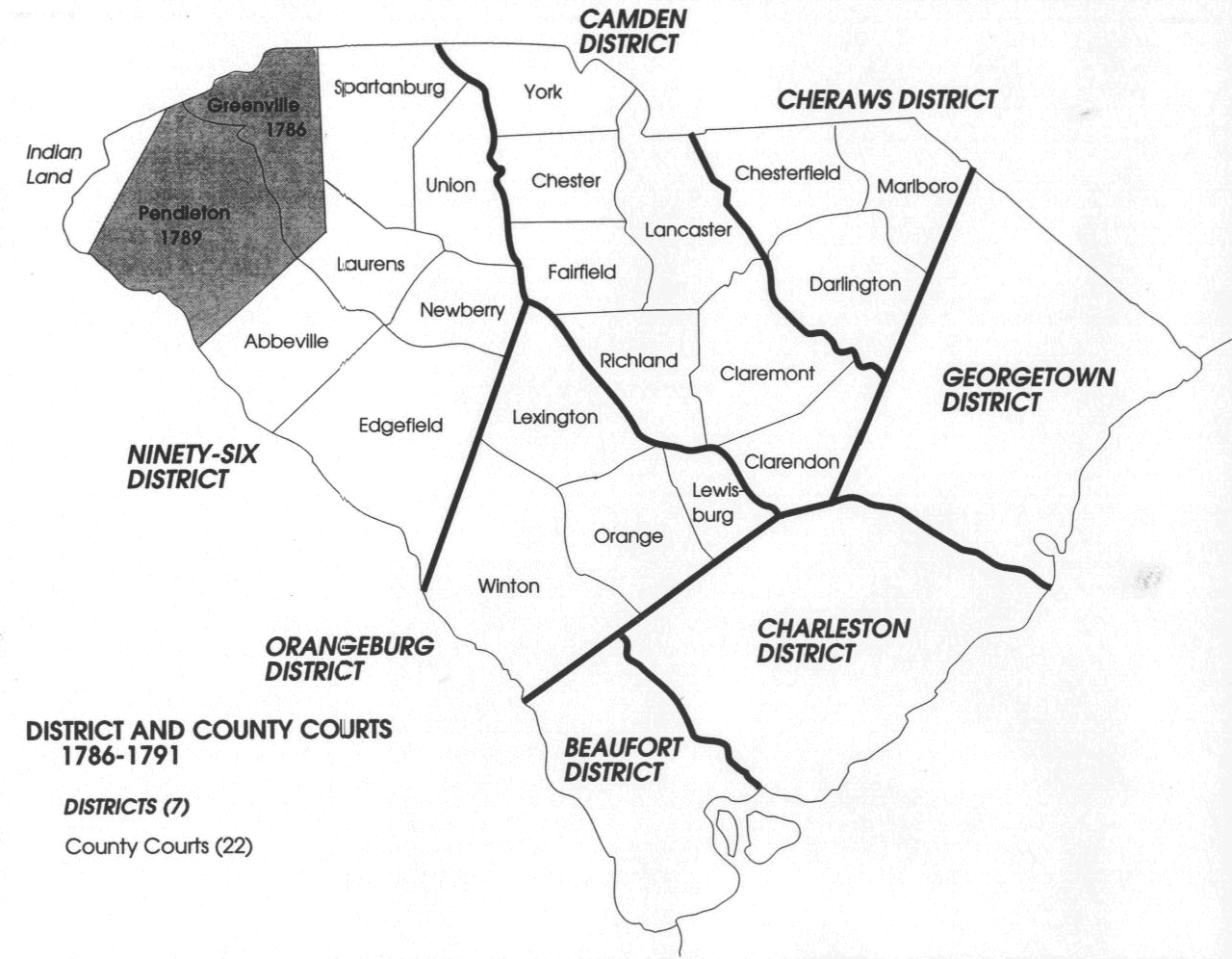

Kershaw

SC State Capital | Revolutionary War Painting
This battle (1775 - 1783) was initiated
by "delegates" from the 13 colonies
(MA, NH, CT, RI, DE, NY, NJ, PA, VA, MD, NC, SC, GA)
in "congress" against Great Britain
over the objection to Parliament's Taxation
policies and lack of Colonial Representation.

[Kershaw] where more than a dozen fierce Revolutionary War battles raged approximately two centuries ago. In 1732, English traders and farmers moved to the area from the Charleston coast...considered the oldest inland city (Camden) in the state. The county (Kershaw) was created in 1791 from parts of Claremont, Lancaster, Fairfield, and Richland counties.
In 1758 Joseph Kershaw, the “father of Camden,” established a store on Pinetree Creek, a Wateree tributary.
Located on the path between Charleston and the Catawba Nation, Kershaw’s store was a convenient place to collect and process local produce, especially wheat, before it was forwarded to Charleston.
Here the village of Pine Tree Hill developed as a milling and trading center.
Within a decade the thriving settlement was renamed in honor of Charles Pratt, Lord Camden, a champion of colonial rights, and a formal plan was drawn up to guide development.
In 1791 Camden was the second town in the state to be incorporated by the General Assembly.
During the Revolutionary War, British troops under Lord Cornwallis occupied Camden for nearly a year during their campaign to subdue the backcountry.











War Forts & Outposts

SC Election Districts Map

War Forts & Outposts
Reminder - in 1800, the South Carolina General Assembly abandoned the term "county" and all existing and new counties would be identified as "districts," combining judicial districts with election districts. The term district, in lieu of county, continued in South Carolina until after the Civil War.
During 1800, the Liberty District was renamed to the Marion District.
The Charleston District (equivalent to a county) was established, but it was not considered to be an "election district." Instead, seven (7) of the existing parishes, as shown above, continued as election districts to represent Charleston District.
The Colleton District (equivalent to a county) was also established, but it too was not considered to be an "election district." Instead, four (4) of the existing parishes, as shown above, continued as election districts to represent Colleton District.
The Beaufort District (equivalent to a county) was also established, but it too was not considered to be an "election district." Instead, three (3) of the existing parishes, as shown above, continued as election districts to represent Beaufort District.
The Orangeburg District (equivalent to a county) was also established, but it too was not considered to an "election district." Instead, three (3) of the existing parishes and districts, as shown above, continued as election districts to represent Orangeburg District.
The South Carolina General Assembly also created Barnwell District and Orangeburg District (equivalent to counties) in 1800, but they did not change the names of the existing election districts at this point in time.
The Sumter District (equivalent to a county) was also established, but it too was not considered to be an "election district." Instead, two (2) of the existing districts, as shown above, continued as election districts to represent Sumter District. Interestingly, Claremont County and Clarendon County were both abandoned (as were all counties), but they retained their "election district" status for years to come.


In 1855, the South Carolina General Assembly resurrected the old Clarendon District (was a county in 1785 to 1800) as the equivalent to all other counties (still called districts), and it retained its "election district" status, and it was no longer considered to be a subset of the Sumter District.
Sumter District was now comprised only of the Claremont "election district." In 1856, the District Seat of Sumter District was moved from Statesburg to a new town, aptly named Sumter Court House.
The old overarching Pendleton District was now only considered in the SC Senate, with a single Senator representing this district. The Anderson District and Pickens District were now their own "election districts" with their allocated delegates representing each district in the SC House of Representatives.









